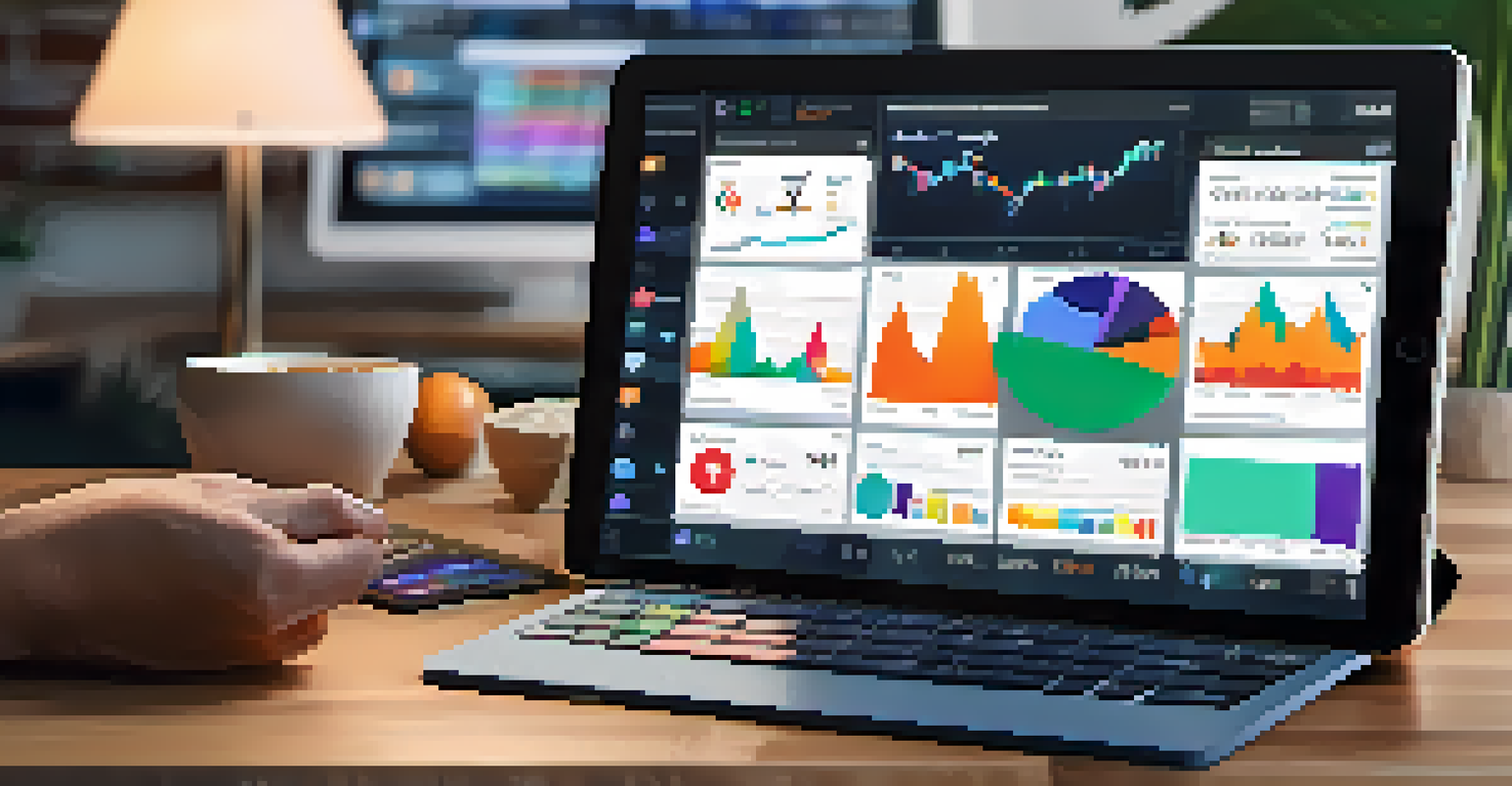Understanding the Mechanics of Decentralized Margin Trading

What is Decentralized Margin Trading?
Decentralized margin trading allows users to borrow funds to amplify their trading positions without relying on a central authority. Think of it as having a personal banker who only exists digitally, working for you 24/7. This method provides traders with the ability to leverage their investments, potentially increasing both profits and risks.
In trading, what is comfortable is rarely profitable.
In essence, it operates on blockchain technology, where smart contracts facilitate transactions automatically. This means that trades are executed without intermediaries, making the process faster and often more cost-effective. By using decentralized finance (DeFi) platforms, traders can access margin trading in a way that traditional exchanges do not offer.
As with any financial activity, understanding the risks involved in margin trading is crucial. While the potential for greater returns exists, the possibility of significant losses is equally present, especially in volatile markets. Thus, it's vital for traders to grasp the basics before diving in headfirst.
How Does Decentralized Margin Trading Work?
At its core, decentralized margin trading involves borrowing assets to increase your trading power. When you leverage your position, you’re essentially using borrowed funds to buy more of an asset than you could with just your own capital. This is similar to taking out a loan to buy a car, where the car serves as collateral.

In a decentralized setup, platforms utilize smart contracts to manage these loans and trades. These contracts automatically execute trades based on predetermined conditions, reducing the need for human intervention and minimizing errors. This mechanism ensures transparency, as all transactions are recorded on the blockchain.
Decentralized Trading Enhances Control
Decentralized margin trading allows users to manage their assets directly, providing greater autonomy compared to traditional exchanges.
However, it's important to note that these systems often require collateral to secure the borrowed funds. If the value of your collateral drops significantly, you may face liquidation, where your assets are sold off to cover the loan. Understanding these mechanics can help you navigate the risks and rewards of margin trading effectively.
Advantages of Decentralized Margin Trading
One of the most appealing aspects of decentralized margin trading is the increased control it offers traders. Without a central authority, you have the freedom to manage your assets as you see fit. This is akin to owning your own business—you're in charge of your decisions without waiting for approvals.
Risk comes from not knowing what you're doing.
Additionally, decentralized platforms often have lower fees compared to traditional exchanges. This cost efficiency can be a game-changer, especially for frequent traders looking to maximize their profits. As the saying goes, every penny counts, and in trading, lower fees can lead to significant gains over time.
Moreover, decentralized trading enhances privacy and security since users retain ownership of their funds at all times. Traditional exchanges require you to deposit your assets, potentially exposing you to risks such as hacks or mismanagement. In contrast, with decentralized systems, you can trade directly from your wallet, reducing those risks.
Risks of Decentralized Margin Trading
While decentralized margin trading has its benefits, it’s not without risks. The most significant concern is market volatility, which can lead to rapid losses if you’re not careful. Imagine walking a tightrope; one misstep and you could fall into a pit of losses, especially when leveraging your investments.
Another risk involves smart contract vulnerabilities. If there’s a flaw in the code, it could be exploited, leading to financial losses. Unlike traditional finance, where you might have recourse, in the decentralized world, mistakes can be costly and irreversible.
Key Risks Include Market Volatility
Market fluctuations and smart contract vulnerabilities pose significant risks in decentralized margin trading, requiring careful management.
Lastly, the lack of regulation in decentralized finance means that there’s often less protection for traders. While this can be seen as an advantage, it also means that you need to conduct thorough research and understand the platforms you’re using. Being informed is your best defense against potential pitfalls.
Key Terminology in Decentralized Margin Trading
To navigate the world of decentralized margin trading effectively, you’ll encounter specific terms that are essential to understand. For instance, 'leverage' refers to the ability to control a larger position with a smaller amount of capital. This concept is crucial because it directly affects your potential gains or losses.
Another important term is 'liquidation,' which occurs when the value of your collateral drops below a certain threshold. When this happens, your position may be forcibly closed to recover the funds borrowed. Think of it as a safety net that protects lenders, but it can feel like a trap for traders caught in a downturn.
Lastly, 'collateral' is the asset you provide to secure your borrowed funds. It’s akin to a security deposit on an apartment; if you fail to meet your obligations, the landlord keeps your deposit. In trading, if the market moves against you, your collateral could be at risk, making it essential to manage it wisely.
Choosing the Right Decentralized Platform
Selecting the right decentralized margin trading platform is crucial for a successful trading experience. Start by researching the platform’s reputation, user reviews, and security features. Just as you wouldn’t buy a car without checking its history, you should ensure that the platform is trustworthy and reliable.
Next, consider the fees associated with trading on the platform. Different platforms have varying fee structures, and understanding these can help you choose one that aligns with your trading strategy. Remember, lower fees can enhance your profit margins, so this aspect cannot be overlooked.
Future Growth with Challenges Ahead
As decentralized finance evolves, traders will face both exciting opportunities and regulatory challenges in the margin trading landscape.
Finally, check the availability of trading pairs and the liquidity of the platform. A platform with a wide range of assets and high liquidity allows you to enter and exit trades more easily, which is essential in the fast-paced trading environment. It’s like having a well-stocked grocery store—having options makes your experience smoother and more enjoyable.
The Future of Decentralized Margin Trading
As the world of cryptocurrency continues to evolve, so too does decentralized margin trading. Innovations in technology and finance are likely to bring new features and improvements to existing platforms. This growth creates an exciting environment for traders who are eager to explore new opportunities and strategies.
Additionally, as more individuals become aware of decentralized finance, user adoption is expected to rise. Just as online banking transformed traditional finance, decentralized platforms are poised to reshape the trading landscape. The democratization of finance could lead to a wider array of tools and resources for traders around the world.

However, with this growth will also come challenges, including regulatory scrutiny and the need for robust security measures. Traders will need to stay informed and adaptable as the landscape shifts. Embracing change while understanding the risks will be key to thriving in the future of decentralized margin trading.